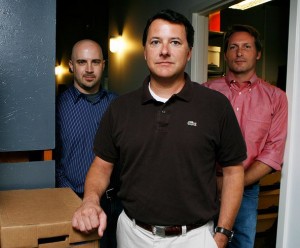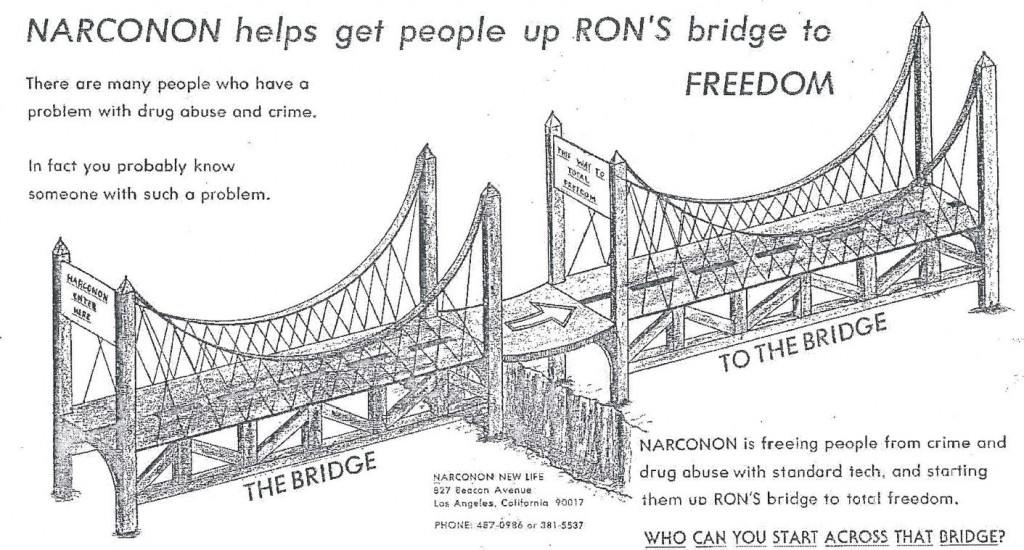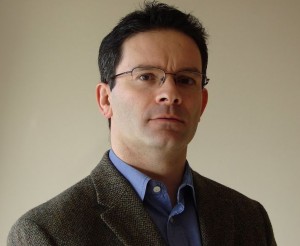Now, the plaintiffs in that suit, led by their attorney, Jeff Harris, have hit back with a detailed briefing explaining why they’re suing not only Narconon, but the Religious Technology Center — Scientology’s controlling entity, which is led by the church’s top official, David Miscavige.
Harris attached 31 exhibits of Scientology’s own publications and internal documents in an attempt to show that Miscavige wields total control of the Scientology empire, down to local drug rehab centers like the one in the Atlanta area, Narconon Georgia, that is the focus of this suit.
We have all of those exhibits, and we think you’ll agree it’s one of the most comprehensive assaults on Scientology’s real structure in many years.
The plaintiffs are alleging fraud, deceptive practices, and negligence after contracting with Narconon Georgia for rehab services, typically for a member of their family. But as we’ve been reporting over the last year, it turns out that just about every step of Narconon’s business model contains a level of deception — prospective clients are not told about Narconon’s connections to the Church of Scientology, for example, and usually have no idea that patients receive beginning Scientology training rather than drug counseling.
In fact, former Narconon executives tell us that Scientology officials keep tight control of the Narconon network, which has been a reliable cash cow for the church in recent years. Former officials Luke Catton and Eric Tenorio tell us that officials of the church would constantly call local facilities for updates about cash flow.
But now that it is facing a class-action lawsuit, the church is following its usual strategy, and in several motions to dismiss filed on July 12, denied that Scientology’s top entity, RTC, had anything to do with the Narconon network and should be let out of the lawsuit. (Motions to dismiss were also filed for Narconon Georgia, its umbrella group Narconon International, and its umbrella group, the Association for Better Living and Education.)
Now, Harris is attempting to show the court in this new filing that Narconon — like all other Scientology enterprises — is controlled from the top, by Miscavige and the RTC.
Although Defendant RTC has attempted to formally separate itself from the activities of the Church of Scientology and the other Defendants, a matter emphasized on its Motion to Dismiss, Defendant RTC does not act consistently with these formalities. To the contrary, as set forth herein, Defendant RTC: holds out the Narconon rehabilitation program as its own, promotes Narconon program to the public, and exercises control over the way in which individual Narconon centers operate. Ultimately, Defendant RTC has sought to promote and expand the Narconon program as part of its goal to expand the reach of Scientology and “clear the planet” of non-Scientologists…Defendant RTC’s Chairman of the Board, David Miscavige, is the current leader of the Church of Scientology and its many affiliated organizations, having assumed that role shortly after Hubbard’s death in 1986. In fact, the Church of Scientology, through Miscavige’s subordinate, Sue Wilhere, publicly declared to the St. Pete Times newspaper that “Mr. Miscavige is Scientology.”
In order to establish that Miscavige and RTC are in control of Narconon (and everything else in Scientology), Harris attaches a whopping 31 exhibits. We have them, in order…
Exhibit A: From a 1974 issue of Narconon News, an illustration showing that Narconon was considered “the bridge to the bridge” — a way to recruit new people into Scientology itself, which has members take increasingly expensive courses on “The Bridge to Total Freedom.”
Exhibit B: A 1972 “Flag Bureaux Data Letter” written by Scientology founder L. Ron Hubbard, congratulating the church’s Guardian’s Office for running and spreading the Narconon program: “The incomparable Guardians Office has been running the Narconon (Drugs-no!) Program over the world.”
Exhibit C: A fundraising mailer from October 1989 which explains that Narconon was a way to get professionals on the Bridge: “Millions of corporate executives, opinion leaders, and professionals from all sectors of society now abuse or are addicted to drugs and alcohol. They urgently need an upstat place, free of psychiatry’s destructive treatments, where they can be fully rehabilitated with 100 percent Standard Tech and then go on up from there.”
Exhibit D: Pages from the secret IRS agreement that gave Scientology tax-exempt status in 1993, describing ABLE and Narconon as Scientology-related entities.
Exhibit E: Booklet that describes the establishment of “Clear Expansion Committees” to promote growth of Narconon and Scientology.
Exhibit F: A 1996 executive directive about Clear Expansion Committees that includes Narconon in Scientology expansion plans.
Exhibit G: Checklist for Clear Expansion Committees that includes instructions for Narconon executive directors.
Exhibit H: A 1996 memo with Clear Expansion Committees project orders.
Exhibit I: A 1996 Clear Expansion Committees memo about “ABLE units” recovering people for Scientology’s Bridge.
Exhibit J: A 2002 directory of Clear Expansion Committees, with Narconon listed.
Exhibit K: A copy of International Scientology News that announces a new Golden Age, and with an illustration that shows Narconon expansion is part of the Ideal Org movement.
Exhibit L: The Command Structures of Scientology, a document that shows the ecclesiastical organization the Watchdog Committee has power over sub-units like ABLE.
Exhibit M: Declaration of Amy Scobee — who says she was appointed Watchdog Committee ABLE by David Miscavige personally, demonstrating Miscavige’s control over the Watchdog Committee itself.
Exhibit N: A command chart of Scientology, showing RTC’s position over the Watchdog Committee.
Exhibit O: Declaration of Haydn James, who watched RTC’s orders supersede local organizations: “The corporate structure of the Church of Scientology and all its related legal entities is separate from its ecclesiastical structure (hierarchy) and the running of all its related organizations. My knowledge and years of experience within the church have left me in no doubt that it runs on, is operated by and through its ecclesiastical organizational layout and not its corporate structure. Its corporate structure exists for other reasons which include the attempt to prevent the spread of legal liability by making obvious and clear distinctions between Scientology corporate entities.”
Exhibit P: An announcement of “amnesty” for Auditor’s Day 1991, which contains this sentence: “The purpose of Religious Technology Center is to see that Scientology is kept pure and on-source and in this way to keep Scientology working.”
Exhibit Q: Declaration of Terris Alene, who worked for ABLE and says that Narconon materials needed approval from an RTC division known as AVC (for Authorization, Verification, and Correction).
Exhibit R: Following the 2008 death of Patrick Desmond at Narconon Georgia, the facility’s director, Mary Rieser, wrote a report to Narconon International and the Office of Special Affairs, Scientology’s intelligence wing — a confirmation that the local Narconon is under their control.
Exhibit S: A 2013 issue of Impact magazine that includes Miscavige’s promise of expansion, including “…a forthcoming fleet of Continental Narconons: for Africa, ANZO, Latin America, Canada, Europe, UK and, just for good measure, another in this nation’s capital.”
Exhibit T: 2013 issue of “Grants News” of the International Association of Scientologists (IAS) with promises of new “continental” Narconon facilities.
Exhibit U: RTC’s website, which boasts of Narconon expansion.
Exhibit V: A 2009 copy of Freedom magazine which boasts of Narconon expansion and trashes the St. Pete Times.
Exhibit W: A 2004 issue of Impact magazine which boasts of Narconon expansion and celebrates Tom Cruise’s Freedom Medal of Valor.
Exhibit X: A 1994 reference guide to Scientology for the media by Heber Jentzsch. (Exhibit Y appears to be the same as Exhibit S.)
Exhibit Z: A 2005 issue of Impact magazine.
Exhibit AA: A 2000 issue of International Scientology News.
Exhibit BB: A 2002 issue of International Scientology News.
Exhibit CC: A 2011 issue of Impact magazine.
Exhibit DD: A 2010 issue of International Scientology News.
Exhibit EE: A recent issue of International Scientology News.
And here’s the motion against RTC’s Motion to Dismiss itself.
Burgess: Opposition to Motion to Dismiss
Harris also filed oppositions to the motions to dismiss by the other defendants…
And one last thing: when the case was removed to the federal court, it was assigned to Judge J. Owen Forrester, who then recused himself. It has now been reassigned to Judge Steve C. Jones. We don’t know why that change was made, or whether it’s very significant.
We’re looking forward to the lawyers in the house giving us their thoughts on these documents. Dig in!
——————–
Paris-based Brit journalist Jonny Jacobsen has produced another of his murderously rigorous investigations, this one about a 1988 death at the Flag Land Base that has had little attention.
Jacobsen points out that the epilepsy death of Heribert Pfaff has been discussed at the Ex-Scientology Message Board in the past, but never with this kind of journalistic thoroughness and passionate attention. Pfaff was, like other Scientologists, convinced to give up his medication and try to “handle” his epilepsy only with Scientology processing and vitamins. Tory Christman has told us how much she suffered trying to do the same thing until she finally went back on her meds. But Pfaff did not, and he died at only 31.
It’s a fascinating piece, and Jonny has labeled it part one — we can’t wait for part two.
——————–
Posted by Tony Ortega on July 25, 2013 at 07:00
E-mail your tips and story ideas to tonyo94@gmail.com or follow us on Twitter. We post behind-the-scenes updates at our Facebook author page. Here at the Bunker we try to have a post up every morning at 7 AM Eastern (Noon GMT), and on some days we post an afternoon story at around 2 PM. After every new story we send out an alert to our e-mail list and our FB page.
If you’d like to help support The Underground Bunker, please e-mail our webmaster Scott Pilutik at BunkerFund@tonyortega.org









